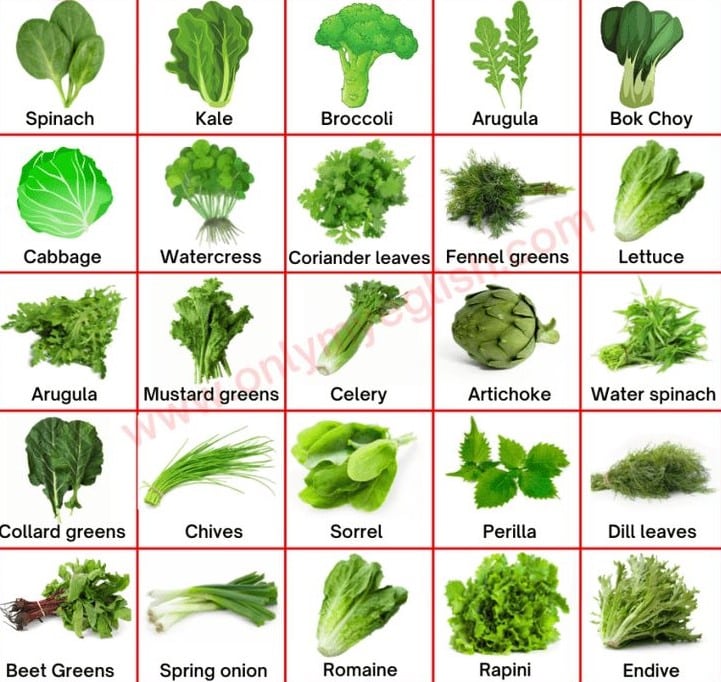Leafy green vegetables are brimming with fiber, vitamins, and minerals. Eating a healthy portion every day can help protect you from many diseases, including heart disease, diabetes, and cancer, and can also help you live longer. Your body can feel more satisfied since it is getting the essential nutrients each cell requires to function properly.
- Weight management: Most green vegetables are low in calories. You can eat as much as you like without putting on extra weight.
- Mortality rate: Frequent consumption can substantially lower your mortality risk. Leafy greens contain vitamin K, Magnesium, the B vitamins, Calcium, amongst many other essential nutrients. These nutrients are critical for every cell function and hence, prevent the aging process and help us look youthful.
- Cardiovascular disease: Greens are low in fat, high in dietary fiber, and rich in folic acid, potassium, magnesium, vitamin C, and phytochemicals. One extra serving per day can lower the risk of cardiovascular disease by 11%.
- Type 2 diabetes: The high level of magnesium and low glycemic index that can be found in greens is ideal for preventing and treating diabetes. Studies showed that if you increase your intake of greens by just one serving per day, your risk of diabetes is lowered by 9%.
- Bone health: The high levels of vitamin K, Magnesium, and calcium in leafy greens produces osteocalcin, the bone builders. Middle-aged women who eat over one serving of greens per day will lower their risk of a hip fracture by 45%.
- Immune function: The rich beta-carotene and Vitamin A improve the immune system.
- Protect eyes: Children who consume inadequate amounts of Vitamin A have a higher risk of going blind. Carotenoids (lutein and zeaxanthin) found in leafy greens are concentrated in the macular region of the retina and the lenses of the eye. A diet dominant in leafy greens protects the eyes from needing eye glasses in kids to macular degeneration and cataracts in adults.
- Cancer: Carotenoids, antioxidants, and flavonoids found in leafy greens protect from most cancer.
There are many leafy greens you can eat. Here is a list of the healthiest greens commonly available:
- Kale: It contains almost all the goodness leafy greens can offer. Kale is rich in vitamins A, C, and K, calcium, folate, potassium, and fiber. It protects the heart and can prevent or slow down cancer.
- Collards: Collards contain nutritional value very similar to Kale.
- Green leaf, red leaf, and Romaine lettuce: These are full of vitamin A and folate. The darker leaves are more nutritious than lighter varieties.
- Turnip greens: The tops of turnips are low in calories, and are loaded with vitamins A, C, and K, and calcium.
- Swiss Chard: These vegetables have a beet-like taste and a soft texture. They contain a healthy amount of vitamins A and C.
- Broccoli: It is rich in vitamins C and A, potassium, folate, fiber, protein, and iron. Broccoli also contain cancer-fighting sulforaphane.
- Spinach: Spinach contains folate, vitamins A and C. Cooked spinach is more nutritious than raw.
- Mustard greens: These greens have a similar nutrition profile to turnip and collards.
- Cabbage: This vegetable is an excellent source of vitamin C and cancer-fighting compounds.
- Small leafy greens, like cilantro, parsley, mint, spearmint, sage, thyme, and fenugreek: These greens are potent in nutrients similar to the large leafy greens noted above.
Green leafy vegetables are an important part of our daily diet, and with so many varieties available, it’s easy to add them to your plate. Always choose crispy leaves with a fresh green color. When the leaves are turning yellow or brown, it means they are aging and losing their flavor.


